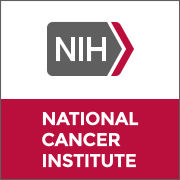2
项与 ALVAC-MART-1 vaccine(NCI) 相关的临床试验Transfer of Autologous T Cells Transduced With the Anti-MART-1 F5 T Cell Receptor in High Risk Melanoma
Background:
* Melanoma antigen recognized by T cells (MART-1) is a gene that is present in melanoma cells.
* This study tests an experimental treatment that uses the patient's own lymphocytes (type of white blood cell), which are specially selected and genetically modified with a gene called anti-MART-1 transduced cells (F5) to target and destroy their tumor. Some of the cells are given as an infusion and others are given as a vaccine.
* The anti-MART-1 F5 cells are currently being studied in other patients in combination with chemotherapy and IL-2 (aldesleukin) therapy.
Objectives:
-To determine if the anti-MART-1 F5 treatment can improve the immune system's ability to shrink tumors and to prevent melanoma from recurring.
Eligibility:
* Patients 18 years of age and older whose melanoma has been removed and are currently disease-free, but who are at risk for recurrence.
* Patients who do not have ocular or mucosal melanoma.
* Patients with tissue type human leukocyte antigens (HLA-A)*0201).
Design:
* Workup: Patients have scans, x-rays, laboratory tests, other tests as needed and leukapheresis, a procedure for collecting white cells to modify in the laboratory and later reinfuse into the patient.
* Patients are assigned to one of four study groups:
* Group 1 receives anti-MART-1 F5 cells by 30-minute infusion through a vein on day 0.
* Group 2 receives anti-MART-1 F5 cells on day 0 followed by injections of MART-1 vaccine, which contains MART-1 and an oil-based liquid called Montanide ISA-51 VG. The vaccine is repeated on day 30.
* Group 3 receives anti-MART-1 F5 cells on day 0 followed by injections of low-dose IL-2 for 5 days (days 0-4).
* Group 4 receives anti-MART-1 F5 cells on day 0 followed by MART-1 vaccine and low-dose IL-2 for 5 days. The vaccine is repeated on day 30.
* Recovery: Patients are monitored closely and given medicines to prevent or treat any side effects of therapy.
* Leukapheresis: Patients undergo leukapheresis at 1 and 3 months after therapy to collect cells to examine the effects of the treatment on the immune system.
* Follow-up: Patients return to National Institutes of Health (NIH) 35 days after completing treatment and then at 3 months and every 6 months thereafter for evaluation with a physical examination, review of side effects, laboratory tests and scans. They have blood tests at 3, 6 and 12 months after treatment and then once a year after that. A biopsy may be requested after treatment ends to examine the effects of treatment on the immune system. All patients return to NIH for a physical examination once a year for 5 years and then complete a follow-up questionnaire for another 10 years.
Phase II Study of Metastatic Melanoma Using Lymphodepleting Conditioning Followed by Infusion of Anti-MART-1 F5 TCR-Gene Engineered Lymphocytes and ALVAC Virus Immunization
Background:
Melanoma antigen recognized by T-cells (MART)-1 is a protein present in melanoma cells.
An experimental procedure developed for treating patients with melanoma uses the anti-MART-1 F5 gene and a type of virus to make special cells called anti-MART-1 F5 cells that are designed to destroy the patient's tumor. These cells are created in the laboratory using the patient's own tumor cells or blood cells.
The treatment procedure also uses a vaccine called plaque purified canarypox vector (ALVAC) MART-1, made from a virus that ordinarily infects canaries and is modified to carry a copy of the MART-1 gene. The virus cannot reproduce in mammals, so it cannot cause disease in humans. When the vaccine is injected into a patient, it stimulates cells in the immune system that may increase the efficiency of the anti-MART-1 F5 cells.
Objectives:
-To evaluate the safety and effectiveness of anti-MART-1 F5 and the ALVAC vaccine in treating patients with advanced melanoma.
Eligibility:
-Patients 18 years of age with metastatic melanoma for whom standard treatments have not been effective.
Design:
Patients undergo scans, x-rays and other tests and leukapheresis to obtain white cells for laboratory treatment.
Patients have 7 days of chemotherapy to prepare the immune system for receiving the anti-MART-1 F5.
Patients receive the ALVAC vaccine, anti-MART-1 F5 cells and interleukin-2 (IL-2) (an approved treatment for advanced melanoma). The anti-MART-1 F5 cells are given as an infusion through a vein. The vaccine is given as injections just before the infusion of anti-MART-1 F5 cells and again 2 weeks later. IL-2 is given as a 15-minute infusion every 8 hours for up to 5 days after the cell infusion for a maximum of 15 doses.
After hospital discharge, patients return to the clinic for periodic follow-up with a physical examination, review of treatment side effects, laboratory tests and scans every 1 to 6 months.
100 项与 ALVAC-MART-1 vaccine(NCI) 相关的临床结果
100 项与 ALVAC-MART-1 vaccine(NCI) 相关的转化医学
100 项与 ALVAC-MART-1 vaccine(NCI) 相关的专利(医药)
100 项与 ALVAC-MART-1 vaccine(NCI) 相关的药物交易






